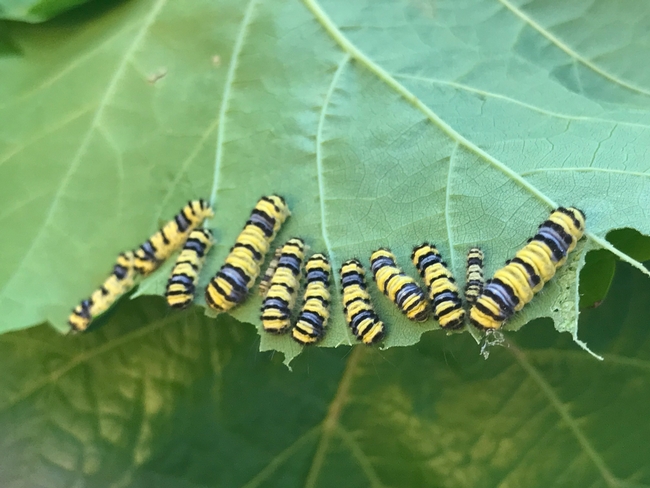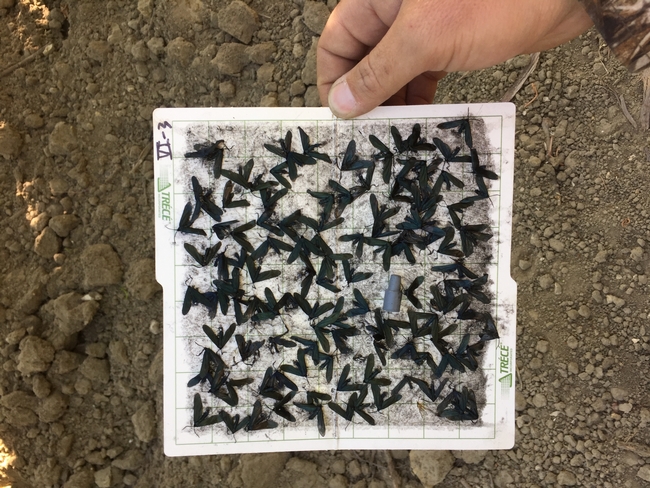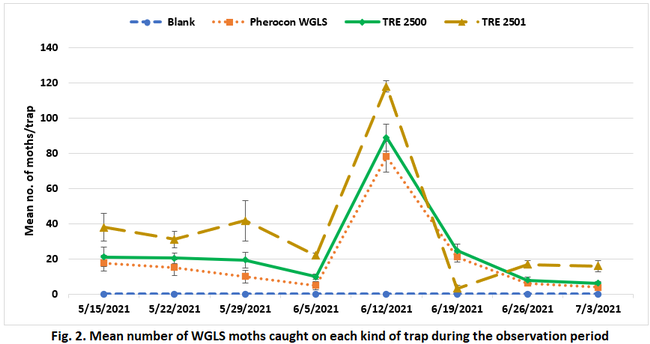The western grapeleaf skeletonizer (WGLS), Harrisina metallica, is a pest of vineyards in some parts of California. Larval feeding skeletonizes grape leaves and uncontrolled populations can lead to a complete loss of foliage, fruit damage, and yield reduction. WGLS populations are usually suppressed with standard pest management practices used against it or other pests. However, considering regular WGLS infestations in the past few years especially in organic vineyards in warmer parts of the state warrant development of a good monitoring and integrated pest management strategy to improve the pest control efficacy and to minimize the risk of resistance development from potential overuse of limited organic pesticides. An earlier bioassay with biologicals showed azadirachtin, spinosad, Bacillus thuringiensis subsp. aizawai, and entomopathogenic fungi Beauveria bassiana and Metarhizium sp. as potential control options (Dara et al., 2019). The potential of Harrisina brillians granulovirus, a naturally occurring virus that previously suppressed WGLS populations a few decades ago is also explored as a natural solution (Federici and Stern, 1990).
WGLS has 2-3 generations per year with late spring-early summer and mid-late summer infestations in the coastal regions (Fig. 1). Based on the detection of shiny black moths and growing degree-day calculations, pesticide applications can be timed to target hatching larvae. Growing degree-day calculations were made using a model provided by Pest Prophet and temperature data from GreenCast. Good monitoring tools such as traps equipped with lures can be useful to improve the monitoring accuracy especially when the adult activity spreads over multiple weeks for each generation. A study was conducted to assist with the development of new lures for WGLS.
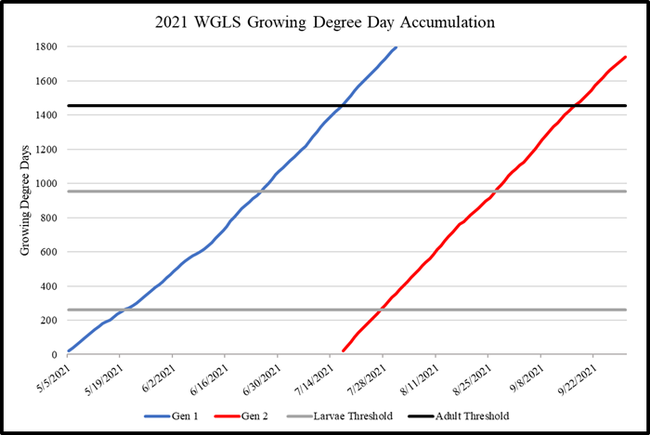
Fig. 1. Growing degree-days indicating WGLS sping and summer generations and thresholds for larvae and adults
Methodology
An organic Cabernet Sauvignon vineyard (San Juan North) in Shandon was used for the study conducted between May and July 2021. Treatments included a blank lure, Pherocon WGLS, TRE 2500, and TRE 2501. The last two are developmental formulations. The pheromone components of the lures are different combinations of 2S-butyl Z7-tetradecenoate, 2-butyl decanoate, 2-butyl dodecanoate, and isopropyl Z7-tetradecenoate to attract male moths and the latter two are new combinations of active ingredients. Each treatment was replicated six times in a randomized complete block design. Within each treatment, a lure was placed in Pherocon VI Delta trap with an adhesive, replaceable liner and tied in the top part of the canopy. A 30 m distance was maintained between the traps with and between replications. Traps were first set up with new lures and liners on 8 May 2021. Adhesive liners were observed every week between 15 May and 3 July 2021 on eight observation dates to count the number of moths. Lures were replaced on 5 June 2021 and adhesive liners were replaced every week or every other week as needed. Data were analyzed using Statistix software and Tukey's HSD test was used to separate significant means.
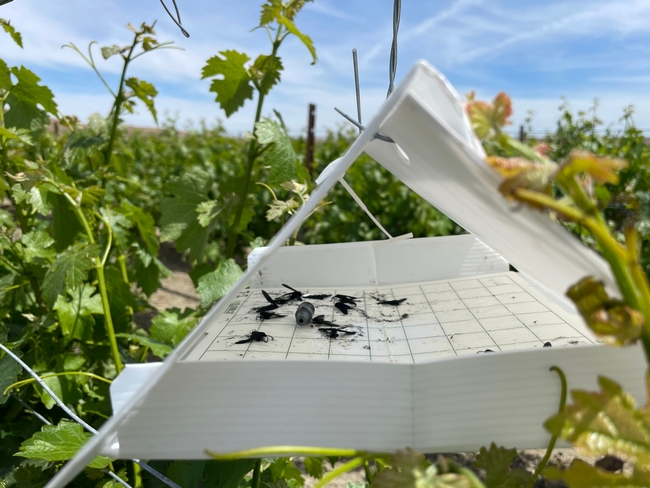
Pheromone infused lure surrounded by the western grapeleaf sekeltonizer male moths (Above photo by Surendra Dara and below photo by Carson DiCicco)
Results
Moth counts significantly (P < 0.0005) varied among the lures on all observation dates (Table 1 and Fig. 2). In general, TRE 2501 lure attracted significantly higher number of moths for most of the observation period. Due to a logistics issue, adhesive liners were not replaced after the moth counts were made on 12 June and those numbers were detected from the next count to derive 19 June moth counts. A lack of space on the liner was probably the reason for having lower moth numbers on 19 June 2021 in TRE 2501. Pherocon WGLS, which is commercially available in the market, was generally less attractive than the developmental formulations. Pheromone combination in the TRE 2501 can be considered for the new formulation for improved monitoring efficacy. Compared to visual monitoring of moth activity, using lures appeared to be an effective strategy for monitoring WGLS, which helped the grower to make effective treatment decisions. On average, 287 moths were captured per each TRE 2501 lure during the 8-week observation period. Considering that each moth can deposit 300 eggs in its lifetime, trapping adults during monitoring can also contribute to reduction in their offspring. In addition to serving as a monitoring tool, lures can also be a control option, if economical.
Acknowledgments: Thanks to Trece for providing lures and traps for the study.
References
Dara, S. K., S. S. Dara, and S. Jaronski. 2019. Biorational control options for the western grapeleaf skeletonizer, a re-emerging pest in California. eJournal of Entomology and Biologicals. https://ucanr.edu/blogs/blogcore/postdetail.cfm?postnum=29081
Federici, B. A. and V. M. Stern. 1990. Replication and occlusion of a granulosis virus in larval and adult midgut epithelium of the western grapeleaf skeletonizer, Harrisina brillians. J. Invertebr. Pathol. 56: 401-414.
